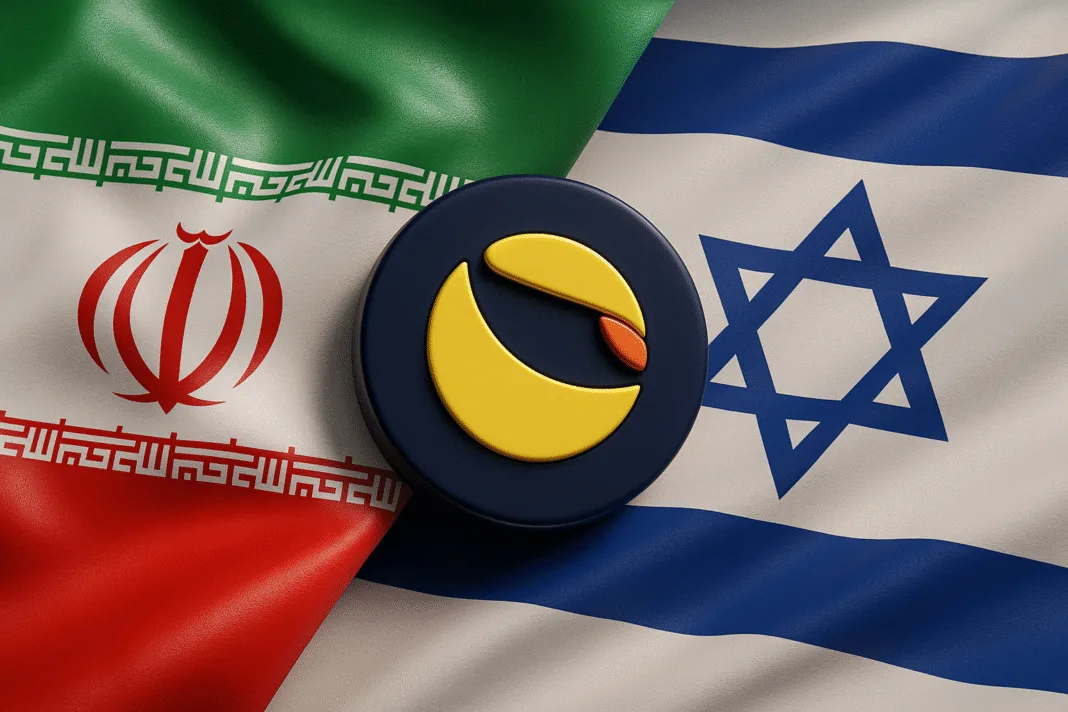The intensifying conflict between Iran and Israel has sent shockwaves across global financial markets, prompting risk-off sentiment and renewed focus on macroeconomic stability. While traditional assets like oil and gold responded predictably, the cryptocurrency sector also experienced sharp volatility. Bitcoin and Ethereum faced significant intraday losses, while Luna Classic (LUNC) and TerraClassicUSD (USTC) stood out with surprising bullish momentum.
1. Rising Tensions in the Middle East
On June 13, Israel launched a series of airstrikes targeting Iranian military and nuclear infrastructure, following Tehran’s deployment of hundreds of UAVs into Israeli airspace. In retaliation, Iran conducted ballistic missile strikes, hitting civilian and military areas. Over the weekend, Israeli air campaigns expanded to Iranian oil facilities, prompting further fears of prolonged conflict and disruptions in energy supply chains, particularly through the Strait of Hormuz.
Major financial markets responded quickly. Global equity indices declined by over 1 percent, oil surged by more than 7 percent, and safe-haven assets like gold and the US dollar rallied. Analysts fear that a prolonged confrontation could impact energy inflation globally, possibly influencing future decisions by central banks such as the US Federal Reserve.
2. Bitcoin, Ethereum Decline Amid Risk Aversion
As the situation escalated, major cryptocurrencies exhibited short-term vulnerability. Bitcoin fell below $103,000 at its lowest point, down nearly 5 percent from prior highs. Ethereum also declined more than 8 percent, trading briefly under the $2,500 level. These moves reflected a broader shift away from risk assets as traders sought the relative safety of traditional instruments.
Total cryptocurrency market capitalization shrank by over $140 billion in less than 24 hours, reflecting increased uncertainty and investor caution.
3. Luna Classic and USTC Defy Market Trends
In contrast to the broader market downturn, Luna Classic (LUNC) and USTC both experienced sharp price spikes in recent days. On June 14 and 15, LUNC rallied more than 28 percent while USTC surged approximately 19 percent, defying the general downward trajectory of the crypto market.
This rally was initially driven by renewed speculation surrounding the launch of Market Module 2.0, a proposed update aimed at restoring USTC’s algorithmic utility. Although the module is still under development and has not yet been launched, positive sentiment surged following increased validator activity and community engagement. Notably, social media platforms and forums saw a marked increase in discussions about potential future burns and smart contract integrations that could drive demand.
Technical indicators also supported the move. Luna Classic broke above key resistance levels near $0.000105, triggering short-covering and momentum-based buying. USTC similarly breached the $0.025 threshold, setting off a flurry of interest among retail traders.
Institutional Signals and Macro Influences
Despite the geopolitical risks, some institutional investors appear to be holding their positions or even adding exposure. MicroStrategy confirmed an additional Bitcoin purchase last week, and ETF inflows remained steady. On-chain analysis shows that while whale wallets reduced leverage exposure, they did not exit positions entirely.
That said, further escalation in the Middle East could delay anticipated interest rate cuts by the US Federal Reserve. Rising oil prices could push inflation higher, increasing pressure on monetary policy makers and indirectly affecting crypto valuations through tighter liquidity conditions.
4. Outlook: Volatility Expected, But LUNC and USTC Remain in Focus
While broader crypto markets may continue to face turbulence due to geopolitical uncertainty, LUNC and USTC have re-entered the spotlight. Their recent price action underscores the unique nature of microcap tokens in volatile environments—capable of significant independent moves when backed by community momentum and speculative narratives.
For investors, the coming weeks will require careful monitoring of both macroeconomic headlines and developments within the Terra Classic ecosystem. Should the conflict de-escalate and crypto sentiment normalize, LUNC and USTC could maintain upward pressure, particularly if Market Module 2.0 progresses toward implementation.

